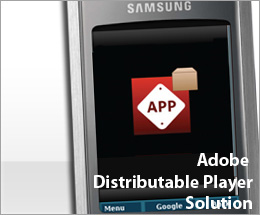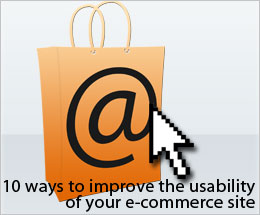 In April, Pingdom released information on their web monitoring survey of 10.000 well-known websites to discover who was using Google Analytics. The results – about half of the websites tested used Google Analytics, and 40% of those were still using the legacy tracking code urchin.js.
In April, Pingdom released information on their web monitoring survey of 10.000 well-known websites to discover who was using Google Analytics. The results – about half of the websites tested used Google Analytics, and 40% of those were still using the legacy tracking code urchin.js.
Just over a year ago, Google stopped supporting urchin in favour of their own ga.js tracking code, recommending everyone to switch over to the new tracking code…
 Fennec, the mobile version of Firefox has reached beta. Mozilla’s answer to the browser wars on mobile devices is here to provide its standards-based open-source browser engine, optimized for mobile, that can be embedded by device manufacturers and others, and is going to be a full-featured mobile browser including support for XUL-based add-ons, delivering on Firefox’s key principles of ease-of-use, security and accessibility, and help developers debug and deploy web applications for the mobile market.
Fennec, the mobile version of Firefox has reached beta. Mozilla’s answer to the browser wars on mobile devices is here to provide its standards-based open-source browser engine, optimized for mobile, that can be embedded by device manufacturers and others, and is going to be a full-featured mobile browser including support for XUL-based add-ons, delivering on Firefox’s key principles of ease-of-use, security and accessibility, and help developers debug and deploy web applications for the mobile market. The never-sleeping minds from Mozilla Labs (who just gave us
The never-sleeping minds from Mozilla Labs (who just gave us  When working freelance, some of the time when you are working on a client’s website or print material you are being given some sort of branding guidelines to adhere to. Some of the time these branding guidelines exist somewhere in a drawer in someone’s desk, but no one knows where. This is even worse when you have to do some maintenance on a client’s website and have to use an existing font, but do not have access to it or the client doesn’t know who supplied the original.
When working freelance, some of the time when you are working on a client’s website or print material you are being given some sort of branding guidelines to adhere to. Some of the time these branding guidelines exist somewhere in a drawer in someone’s desk, but no one knows where. This is even worse when you have to do some maintenance on a client’s website and have to use an existing font, but do not have access to it or the client doesn’t know who supplied the original. Adobe announced in February this year that its latest version of Flash Lite 3.1 Distributable Player has been released for beta testing.
Adobe announced in February this year that its latest version of Flash Lite 3.1 Distributable Player has been released for beta testing. In the beginning of January, Mozilla Labs, the developers behind the beloved web browser FireFox, have announced the release of Bespin, its first initiative for open web development.
In the beginning of January, Mozilla Labs, the developers behind the beloved web browser FireFox, have announced the release of Bespin, its first initiative for open web development. With more and more consumers spending time on the web looking for online bargains (let’s be honest, if I see a game for £27.99 online but £34.99 in shops then I wouldn’t be thinking twice either) instead of shops, companies must ask themselves if their website is not only showing the right prices, but is also usable enough to order items from.
With more and more consumers spending time on the web looking for online bargains (let’s be honest, if I see a game for £27.99 online but £34.99 in shops then I wouldn’t be thinking twice either) instead of shops, companies must ask themselves if their website is not only showing the right prices, but is also usable enough to order items from. Usability is a serious concern for many websites – what does the customer want when he arrives on your website? Does the user know where to go, what to do and how to ask questions or enquire / purchase?
Usability is a serious concern for many websites – what does the customer want when he arrives on your website? Does the user know where to go, what to do and how to ask questions or enquire / purchase?